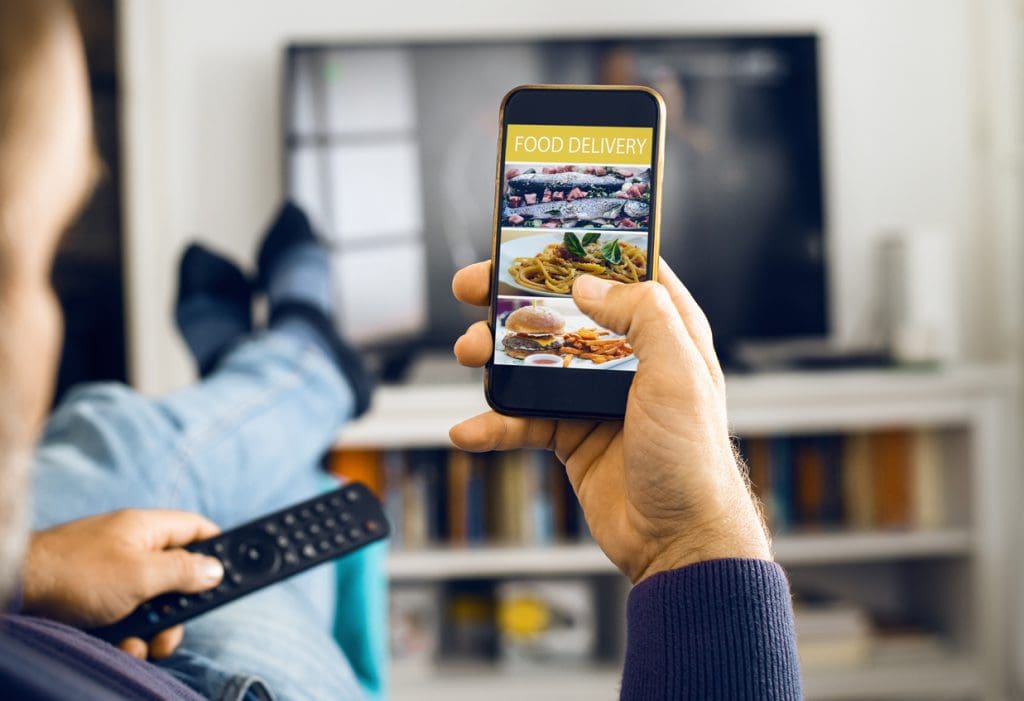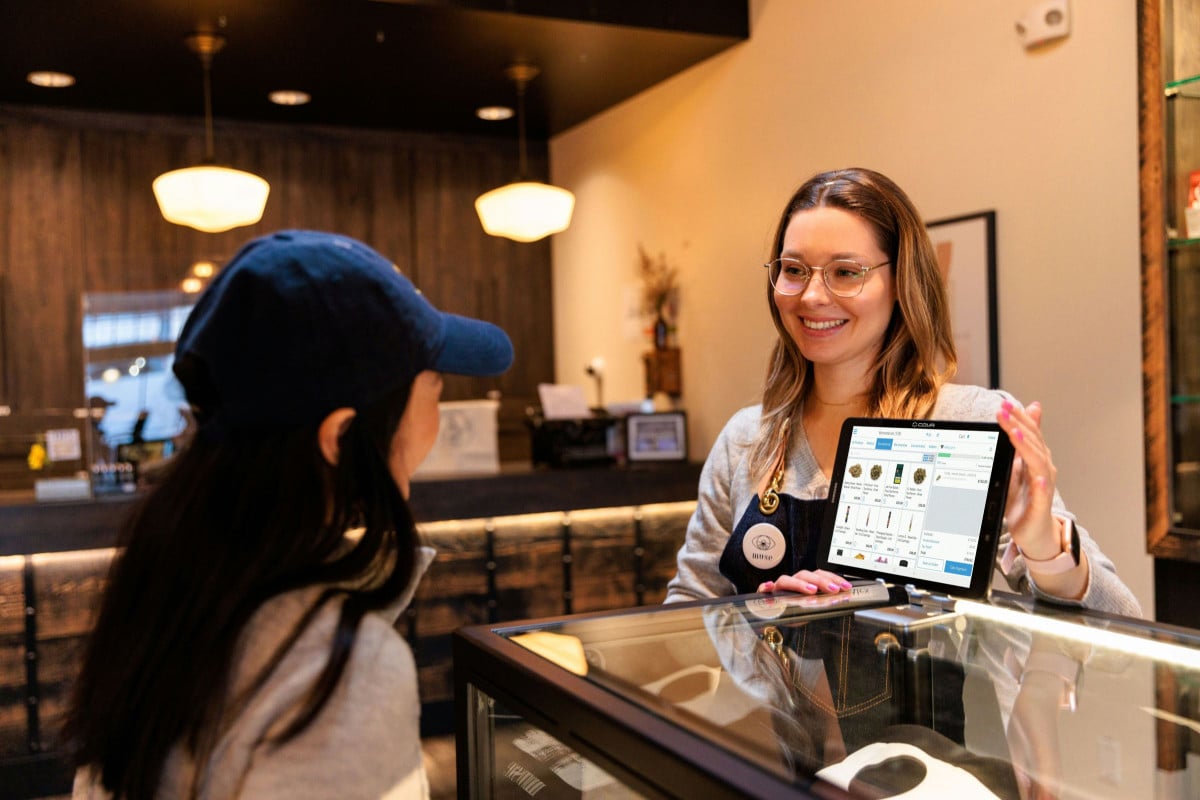1 min read
What Can Restaurants Learn from Netflix?
Subscription programs have emerged as a key component in the restaurant marketing toolkit. Like the loyalty programs on which they’re based,...
Platform
What is Paytronix Guest Engagement Suite?
Combining online ordering, loyalty, omnichannel messaging, AI insights, and payments in one suite. Paytronix delivers relevant, personal experiences, at scale, that help improve your entire digital marketing funnel by creating amazing frictionless experiences.
A Complete Guest Engagement Suite
Online Ordering
Acquire new customers and capture valuable data with industry leading customization features.
Loyalty
Encourage more visits and higher spend with personalized promotions based on individual activity and preferences.
Catering
Grow your revenue, streamline operations, and expand your audience with a suite of catering tools.
CRM
Build great customer relationships with relevant personal omnichannel campaigns delivered at scale.
Artificial Intelligence
Leverage the most data from the most customer transactions to power 1:1 marketing campaigns and drive revenue.
Payments
Drive brand engagement by providing fast, frictionless guest payments.
Solutions
Paytronix Guest Engagement Solutions
We use data, customer experience expertise, and technology to solve everyday restaurant and convenience store challenges.
FlightPaths are structured Paytronix software onboarding journeys designed to simplify implementation and deliver maximum ROI.
Customer Success Plans (CSPs) are tiered service offerings designed to help you get the most from your Paytronix software, whether you prefer self-guided support or hands-on partnership.
Contactless Experiences
Accommodate your guests' changing preferences by providing safe, efficient service whether dining-in or taking out.
Customer Insights
Collect guest data and analyze behaviors to develop powerful targeted campaigns that produce amazing results.
Marketing Automation
Create and test campaigns across channels and segments to drive loyalty, incremental visits, and additional revenue.
Mobile Experiences
Provide convenient access to your brand, menus and loyalty program to drive retention with a branded or custom app.
Subscriptions
Create a frictionless, fun way to reward your most loyal customers for frequent visits and purchases while normalizing revenues.
Employee Dining
Attract and retain your employees with dollar value or percentage-based incentives and tiered benefits.
Order Experience Builder
Create powerful interactive, and appealing online menus that attract and acquire new customers simply and easily.
Loyalty Programs
High-impact customizable programs that increase spend, visit, and engagement with your brand.
Online Ordering
Maximize first-party digital sales with an exceptional guest experience.
Integrations
Launch your programs with more than 450 existing integrations.
Loyalty Programs
Deliver the same care you do in person with all your digital engagements.
Online Ordering
Drive more first-party orders and make it easy for your crew.
Loyalty Programs
Digital transformations start here - get to know your guests.
Online Ordering
Add a whole new sales channel to grow your business - digital ordering is in your future.
Integrations
We work with your environment - check it out
Tobacco Reporting
Comply with AGDC 2026 DTP Requirements
Company
We are here to help clients build their businesses by delivering amazing experiences for their guests.
Meet The Team
Our exceptional customer engagement innovations are delivered by a team of extraordinary people.
News/Press
A collection of press and media about our innovations, customers, and people.
Events
A schedule of upcoming tradeshows, conferences, and events that we will participate in.
Careers
Support
Paytronix Login
Order & Delivery Login
Resources
Paytronix Resources
Learn how to create great customer experiences with our free eBooks, webinars, articles, case studies, and customer interviews.
FlexPoint Service Catalog
Access FlexPoints are a cost-effective, flexible way to access our value-added services, to ensure you get greater impact from your Access software solution.
See Our Product In Action
E-Books
Learn more about topics important to the restaurant and c-store customer experience.
Reports
See how your brand stacks up against industry benchmarks, analysis, and research.
Blog
Catch up with our team of in-house experts for quick articles to help your business.
Case Studies
Learn how brands have used the Paytronix platform to increase revenue and engage with guests.
The brands winning now aren't competing on price. They're turning every transaction into a relationship. Discover how in the 2026 Trends Predictions Report.
7 min read
Nov 13, 2025

Enterprise marketing leaders today face a serious challenge: how to design loyalty programs that don’t just reward purchases but strategically deepen brand affinity, drive higher guest frequency, and unlock lifetime value at scale. With over 1,800 brands using our platform, Paytronix has seen what separates average programs from market leaders. Here’s the enterprise loyalty playbook you can’t afford to ignore
This section focuses exclusively on advanced imperatives that distinguish market-leading loyalty programs. Each imperative reflects a strategy that directly drives retention, engagement, and profitability.
A successful loyalty program keeps guests coming back by making retention the priority rather than just handing out rewards. You want guests to feel valued for ongoing engagement, not just single purchases, which strengthens their emotional connection to your brand.
Paytronix provides AI-driven triggers and automated campaigns designed specifically to prevent lapses and motivate repeat visits, turning retention-first strategies into measurable results.
Data is the backbone of modern loyalty programs. Leveraging predictive analytics and zero- and first-party customer data allows you to deliver relevant, individualized offers to every guest, across all locations and touchpoints.
Paytronix combines loyalty and customer relationship management (CRM) data to deploy hyper-relevant offers at scale, enabling one-to-one marketing that drives incremental revenue and deepens customer relationships.
Your loyalty program must operate seamlessly wherever guests interact with your brand online, on mobile apps, and in-store. A consistent experience across channels builds trust and prevents friction that could undermine engagement.
Paytronix integrates across POS, online ordering, and mobile platforms, ensuring a smooth, omnichannel experience that reinforces loyalty every step of the guest journey.
Markets and guest expectations evolve quickly. Your loyalty program must adapt to regional differences, segment-specific behaviors, and short-term promotions or limited-time offers, keeping it relevant and profitable.
Paytronix’s flexible platform allows you to design dynamic earning rules, segment campaigns, and run limited-time offers without disrupting your core program, giving your brand agility in any market.
Below are 34 actionable tips that connect directly to the four imperatives above. Use them to design, optimize, and scale a loyalty program that drives measurable results.
A retention-first approach requires creating structures that reward repeat behavior and prevent lapses. These 10 tips help you build a program that keeps guests coming back:
Data-powered personalization drives loyalty and profitability. These seven tips show how to tailor experiences and messaging to each guest at scale:
Smart segmentation turns raw data into actionable insights. Here are eight tips to collect, organize, and leverage data for maximum impact:
A scalable loyalty program relies on robust technology. These five tips show how to integrate and optimize systems for seamless operation:
Even the best-designed program must support profitability. Here are four tips for maintaining financial health while scaling your loyalty program:
These best practices apply across all aspects of a loyalty program and help tie every initiative together. They provide the core principles that support retention, personalization, technology, and financial performance:
Don’t know where to start? The table below distills the 34 loyalty program design insights into high-impact features, showing how each translates into measurable business outcomes.
It also highlights the Paytronix capabilities that help you bring these features to life, connecting strategy to action across retention, engagement, and revenue growth.
|
Loyalty Feature |
Business Outcome |
Paytronix Capability |
|
Tiered Rewards |
↑ AOV, ↑ Retention |
Tier Designer + Lifecycle Triggers |
|
Predictive Offers |
↓ Churn, ↑ Engagement |
AI to IA™ Predictive Offers |
|
Cross-Channel Consistency |
↑ Guest Satisfaction |
POS + App + Web Integration |
|
Dynamic Earning Rules |
↑ Engagement, ↑ Visit Frequency |
Rules Engine + Behavioral Segmentation |
|
Personalized Messaging |
↑ Redemption, ↑ Engagement |
CRM + Mobile/App Push Notifications |
|
Milestone Recognition |
↑ Retention, ↑ Emotional Loyalty |
AI-Powered Trigger Campaigns |
|
Referral Programs |
↑ Customer Acquisition, ↑ Engagement |
Referral Tracking + Automated Rewards |
|
Time-Sensitive Offers |
↑ Visit Frequency, ↑ AOV |
Campaign Scheduler + Push Notifications |
|
Location-Specific Promotions |
↑ Local Sales, ↑ Engagement |
Geo-Targeted Campaigns + POS Integration |
|
Online & Mobile Ordering Integration |
↑ Digital Sales |
Order & Delivery + App Integration |
|
Surprise & Delight Rewards |
↑ Engagement, ↑ Emotional Loyalty |
AI-Triggered Bonus Rewards |
|
Redemption Alerts & Notifications |
↑ Reward Redemption, ↑ Engagement |
CRM + App Notifications |
|
VIP or Invite-Only Programs |
↑ Retention, ↑ Advocacy |
Tier Designer + Exclusive Event Campaigns |
|
Gamification & Challenges |
↑ Engagement, ↑ Repeat Visits |
App + Campaign Builder + Leaderboards |
|
Behavioral Upsell Recommendations |
↑ AOV, ↑ Engagement |
CRM + Predictive Analytics + AI Offers |
|
Feedback-Driven Campaigns |
↑ Retention, ↑ Satisfaction |
CRM + Survey Integration + Analytics |
Enterprise loyalty programs are most effective when they combine strategic design, data-driven insights, and seamless execution. The brands below demonstrate how advanced loyalty programs drive measurable business outcomes, from increased visits and spending to long-term engagement and advocacy.
Paytronix's AI delivered one-to-one marketing campaigns that aligned with individual guest behavior, helping Smashburger deliver personalized rewards. By micro-segmenting its customer base, the brand spurred additional sales and increased engagement even during challenging economic conditions.
The loyalty program accounted for at least $1.9 million in incremental sales in 2020, representing 6.5% of overall sales growth. Targeted offers included veggie burger promotions for non-beef eaters, LTO rewards for frequent fry purchasers, and order-and-delivery incentives such as triple points for online orders.
Chick-fil-A's loyalty program was experiencing a common challenge: rewarding top-tier customers without cannibalizing revenue. Its publicly available “One” program tracked visits and offered rewards, while its secret invite-only “A-List” program created an exclusive community of high-value guests.
Members of the A-List received personalized offers, invitations to tastings and events, and exclusive perks without reducing profits from existing customer behavior. This tiered approach balanced recognition for loyal guests with incremental revenue generation, demonstrating how segmentation and strategic rewards drove engagement and repeat visits.
Starbucks Rewards illustrated how a large-scale loyalty program combined simplicity, gamification, and data-driven personalization. Members earned points, called stars, through purchases tracked via a dedicated mobile app, and redeemed rewards such as free drinks, birthday perks, and tiered benefits at Gold Level.
The program significantly influenced customer behavior, with repeat visits from members generating roughly 40% of the brand’s UK revenue and a measurable 7% sales increase since the program’s introduction. By centralizing member data and analyzing purchase patterns, Starbucks delivered hyper-relevant offers, promoted seasonal items, and optimized both in-store and digital experiences to drive long-term loyalty.
True enterprise loyalty goes beyond seasonal campaigns or short-term promotions. Success comes from combining data-driven design, personalized experiences at scale, and robust financial modeling that aligns rewards with profitability. When these elements work together, loyalty becomes a system that drives repeat visits, increases average order value, and strengthens customer lifetime value.
Paytronix empowers brands to execute real-world, real-time loyalty across multiple locations, digital channels, and customer segments. Discover how Paytronix helps enterprise restaurant marketers design loyalty programs that deliver measurable, scalable results. Book your free demo now.

1 min read
Subscription programs have emerged as a key component in the restaurant marketing toolkit. Like the loyalty programs on which they’re based,...

61 min read
Loyalty programs have evolved far beyond the simple “earn-and-burn” points model. Today’s consumers expect brands to recognize them as individuals,...

15 min read
More than 70% of consumers say loyalty programs influence what they buy. That’s a number too big to ignore.